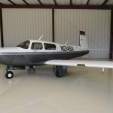Climb Setting question
-
Members Online
- Niko182
- Red Leader
- RoundTwo
- Shadrach
- Ragsf15e
- PT20J
- FastGlasair
- Andy95W
- 00-Negative
- mike_elliott
- hphillips
- Phil L
- WilliamR
- InJuRo
- Ron McBride
- Ibra
- dkkim73
- katzhome
- IvanP
- Rmfriday
- daytonabch04
- LANCECASPER
- PeytonM
- kowabunga
- exM20K
- salty
- toto
- acekng1
- Terraplane
- Ivan
- DonMuncy
- TCC
- N177MC
- Stetson20
- Stubby
- OR75
- Jim F
- 802flyer
- Vance Harral
- Skyland
- rturbett
- ElderWhitehead1
- dzeleski
- warren.huisman
- tls pilot
- kaba
- egarcia77035


Recommended Posts
Join the conversation
You can post now and register later. If you have an account, sign in now to post with your account.